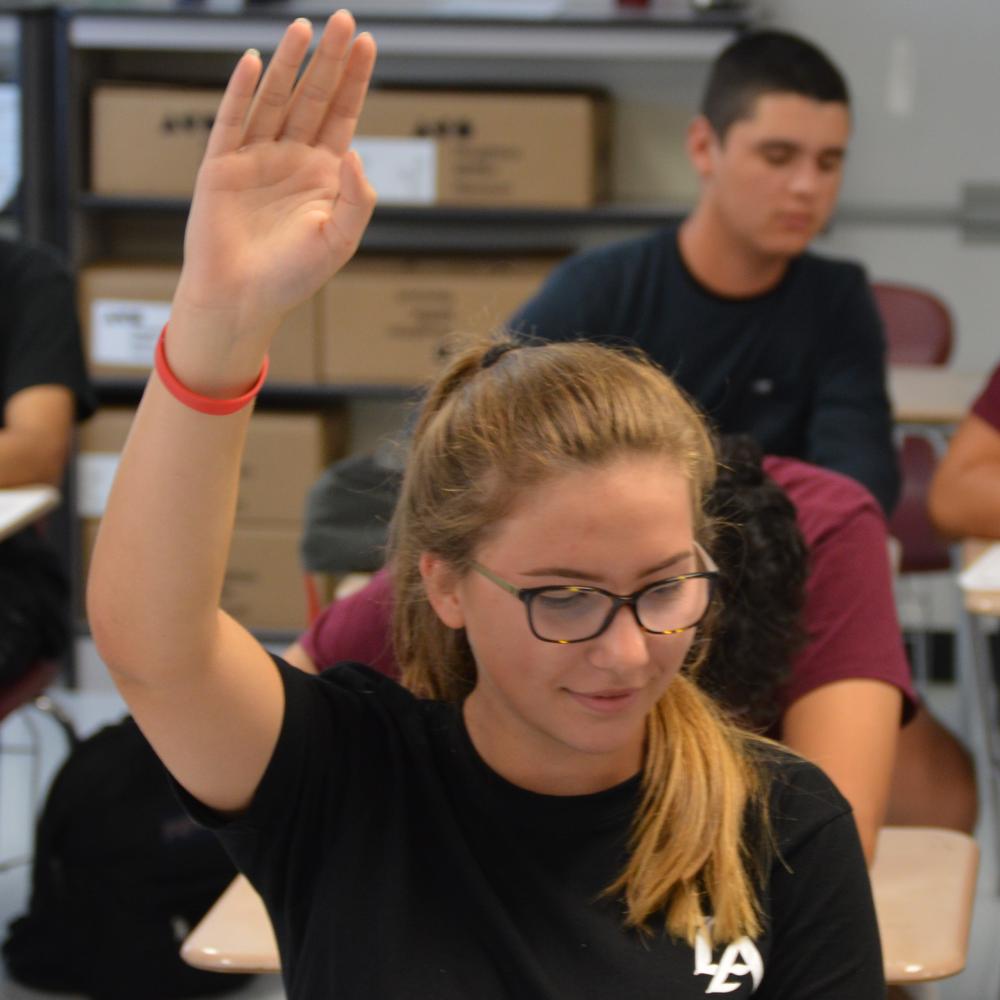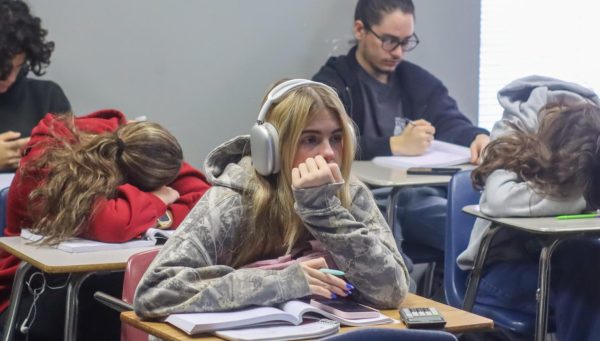(Ex)changing it up
Foreign-exchange students travel to learn about American culture and language
photo by Michael Gibson
Sophomore Lara Kadoic, a foreign-exchange student from Germany, participates in Algebra 2.
Sophomore Lara Kadoic was nervous: she was nervous about traveling to America for the first time, nervous about starting high school in one week, and nervous about meeting her host family.
“I thought it was going to be so awkward and that we wouldn’t talk, especially during dinner, but when I met them it was so good and it just felt right,” Kadoic said.
Through the Youth for Understanding program, Kadoic and other foreign-exchange students get to travel and to study in a new place where they can learn the language and the culture. This program allows over 260,000 students and host families in 50 different countries to “advance intercultural understanding, mutual respect, and social responsibility through educational exchange for youth, families and communities.”
Three students from YFU attend this school: junior Natrada Siriak, from Thailand, sophomore Ting-You Lui from Taiwan and Kadoic, from Germany.
In order to become part of the YFU program, the student must apply first and take a test; then a host family chooses a foreign-exchange student to live with them.
“My host family is really nice — they are more like my grandparents to me because they are a bit older and they don’t have any kids living with them,” Kadoic said.
One of the biggest changes for any foreign exchange student is the school system. When Siriak goes to school in Thailand, instead of having seven classes and every subject, she picks between four majors: Science and Math, Math and Language, Language, and Art. As a language major, Siriak does not need to learn math nor science at home.
Unlike science and math, however, everyone must learn English. “We start learning in first grade because it’s such an important language,” Siriak said. “But since the teachers aren’t native speakers, I wanted to come here and learn English.”
Lui went to school for 13 hours each day, from 7:30 a.m. to 8:30 p.m. He came to study here because his parents thought it was a good learning experience. However, Lui did not say “yes” right away because his life and his friends were in Taiwan. As he thought about it though, he then realized that it would not be such a bad idea.
Kadoic moved here from Germany on Aug. 2 looking for a chance to better her English. Since Kadoic was little, she always had the dream coming to the United States and to learning to speak just like the natives.
In Germany, the grades are split up differently, with middle school from grades 1-4 and high school from grades 5-12, and teachers switch classrooms instead of students. Kadoic also had school three times a week and each day she had different times when she would start and end.
“It’s completely different,” Kadoic said. “We do get a lot of homework here, but it’s easier because school is longer, teachers talk more and tell us what we have study.”
Even though there are positive things that come out of being a foreign-exchange student, one of the challenges they have to overcome is being away from family. All of the foreign-exchange students have contact with their family through text, call and FaceTime, but none of them will see their family until the summer.
“I would love to come back, but it’s hard without my family being here and it’s pretty expensive being a foreign-exchange student,” Kadoic said.
Your donation will support the student journalists of Hagerty High School. Your contribution helps us publish six issues of the BluePrint and cover our annual website hosting costs. Thank you so much!







